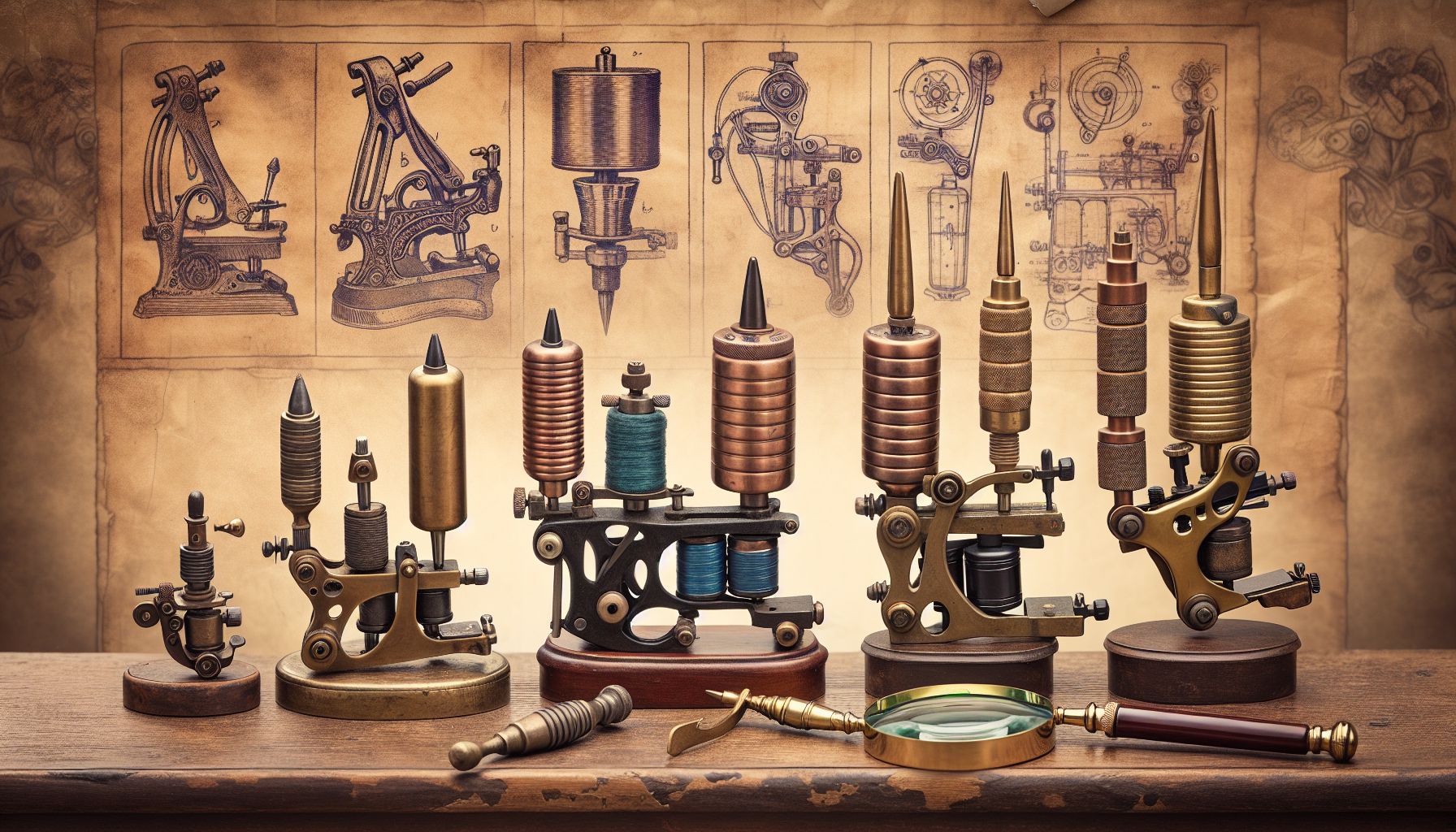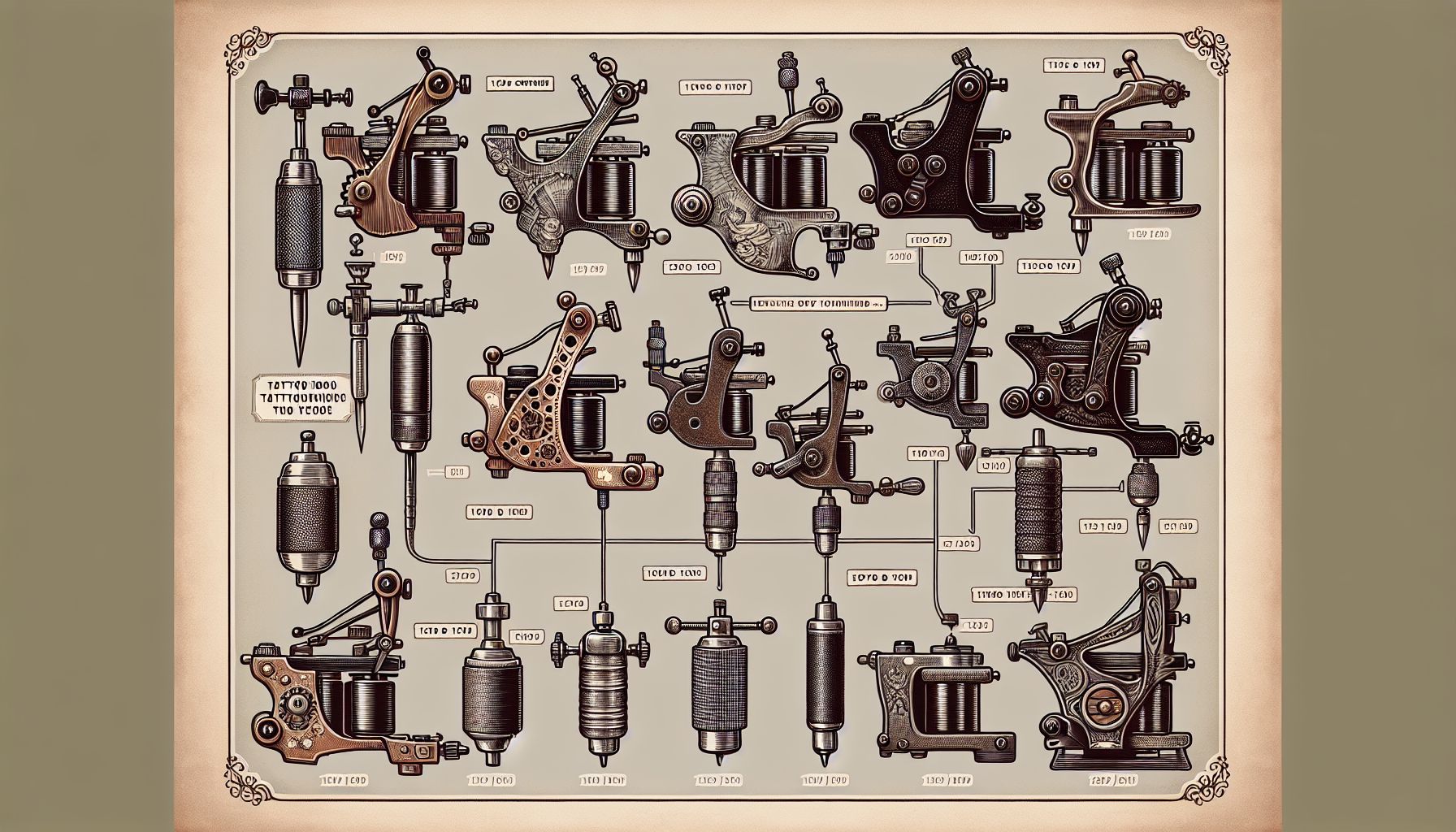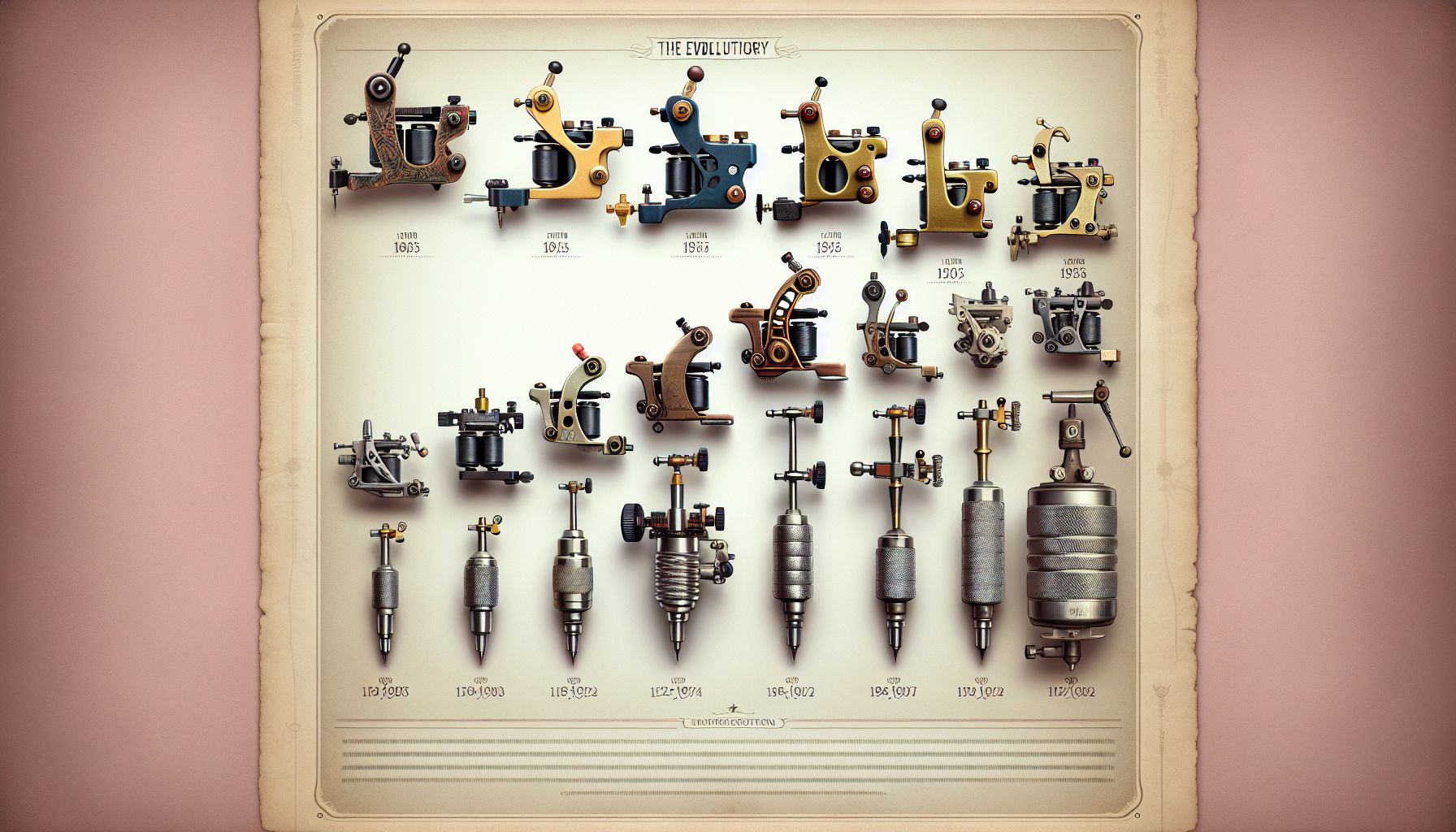When you’re deeply immersed in the artistry that is tattooing, you know that the heart of our creative profession lies in the tools we wield. Among the most essential tattoo supplies that can make or mar our craft is the tattoo machine. Having spent years etching designs into the canvases of skin that walk through my door, I’ve seen the evolution of these devices from the ground up— from the age when they were more like ungainly gadgets to the current era of sleek, high-performing machines.
The tattoo machine, often affectionately dubbed the “iron” by many a tattoo artist, is the linchpin of our trade. Notwithstanding its importance, choosing the right machine isn’t as simple as picking the most popular brand or the one with the snazziest appearance. It’s about finding a blend of reliability, efficiency, and comfort that resonates with your style of tattooing.
A Journey Through Time: The Tattoo Machine’s Metamorphosis
Casting a glance back into history, the earliest machines were crude and rudimentary. Samuel O’Reilly’s patent in the late 19th century brought about a revolution in tattooing, introducing the electric tattoo machine. Since then, technology and design ingenuity have spurred on a relentless march of progress.
During my initial years as an apprentice, the choice was primarily between coil machines and rotary machines. Coil machines, known for their distinct buzz, have been the perennial favorites for many tattoos because of their force and precision. Their electromagnetic circuit allows artists to excel at intricate lines and saturate vivid colors into the skin. Yet, for all their merits, coils require a deft hand to manage their weight and vibration during long sessions.
On the flip side, the rotary machines, with their smooth and quiet operation, always seemed more approachable, particularly to novices. The gentle hum of a rotary machine is a comforting sound that doesn’t compete with the ambient music of the shop or the conversations with clients. What’s more, their lightweight design makes them less taxing on the wrist and suitable for shading work.
With the advent of pneumatic tattoo machines and the innovation of digital power supplies, the horizon of our craft has expanded further. Pneumatic machines, powered by compressed air, have brought an unprecedented level of lightness and ease, but they haven’t been widely adopted due to the need for an air compressor.
The Present Landscape: Modern Machines Meeting Diverse Needs
Fast forward to today, the conversation around tattoo machines is more nuanced and exciting. The machines now are feats of precision engineering. They are ergonomic, reliable, and cater to the various styles of tattooing, from Japanese to tribal, traditional to new school.
As I test the machines found in my online store, it’s clear that versatility and customization are at the forefront of current designs. With adjustable stroke lengths, voltage, and give, artists can now tweak their machines to behave precisely as needed. Modular machines like the Spektra Xion and the Cheyenne HAWK Pen are taking over, allowing artists the flexibility to switch between lining and shading with minimal fuss.
The rise of cartridge needles has also transformed how we use tattoo machines. The days of laborious needle setup are long gone. Now, a quick swap of the cartridge is all it takes, which also makes for easier and more efficient workflow. This system has facilitated a shift towards more hygienic practices, which is paramount in our industry. Each cartridge system comes with its own patented needle configurations, ensuring that artists can pursue the finest detail with the confidence that the technology can keep up.
Practical Advice from the Tattoo Trenches
Diving into my own experiences, I’ve learned that the right machine doesn’t just do the job—it feels like an extension of your own hand. I recall working with a particular coil machine that was all the rage at the time. Despite its popularity, I found it cumbersome and unsuited to my technique. After switching to a lighter rotary machine, my work became more fluid, and my hand fatigue at the end of the day was significantly reduced.
When advising artists on tattoo supplies, particularly machines, I always suggest considering three key aspects: comfort, control, and versatility. A comfortable tattoo machine ensures longer sessions without straining your hand or compromising on precision. Control is indispensable for the artist’s confidence to shape every stroke exactly as intended. Versatility, meanwhile, allows an artist to explore different styles without being constrained by their tools.
In the tapestry of your tattooing career, selecting the right tattoo machine is like choosing the perfect thread to bring your designs to life. Each innovation, each technological stride opens up possibilities to refine your technique and push creative boundaries. For those starting out or veterans looking to keep pace with change, my online store is more than just a hub for tattoo supplies—it’s a resource to inform your choices and support the pursuit of your artistic vision.
As the landscape of tattoo machines continues to evolve with wireless options and AI-driven functions, our craft stands on the cusp of another revolution. Where tradition meets technology, the future of tattooing is bound to be as vibrant and dynamic as the art we create.
To sum it up, the path of the tattoo machine has been one of continual improvement, mirroring the evolution of tattooing itself. From the buzzing coils to the whisper of rotaries, our industry has embraced change while holding fast to the enduring spirit of artistry. As both a practitioner and purveyor of tattoo supplies, I can attest to the profound impact a well-chosen machine can have on an artist’s work. Whether you’re just starting out or are a seasoned veteran yourself, embracing the innovations in our tools is not just about keeping up with the times—it’s about pushing the envelope to deliver tattoos that are as timeless as the machines we use to ink them onto skin.



